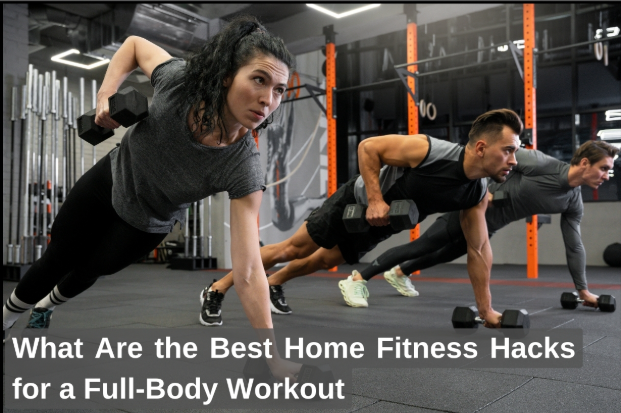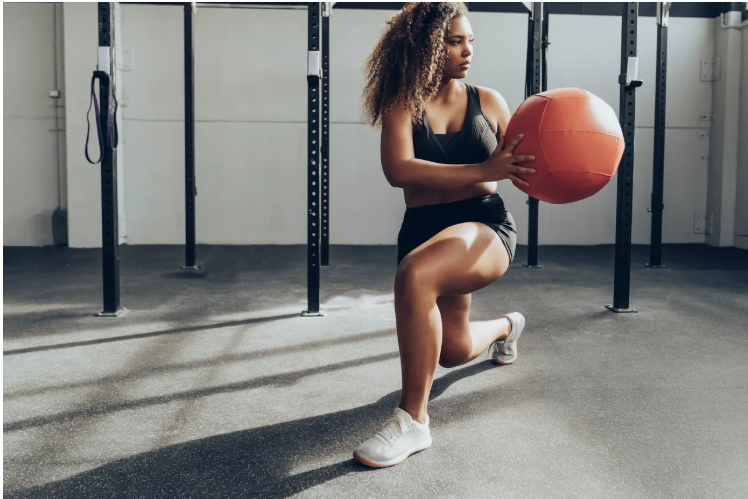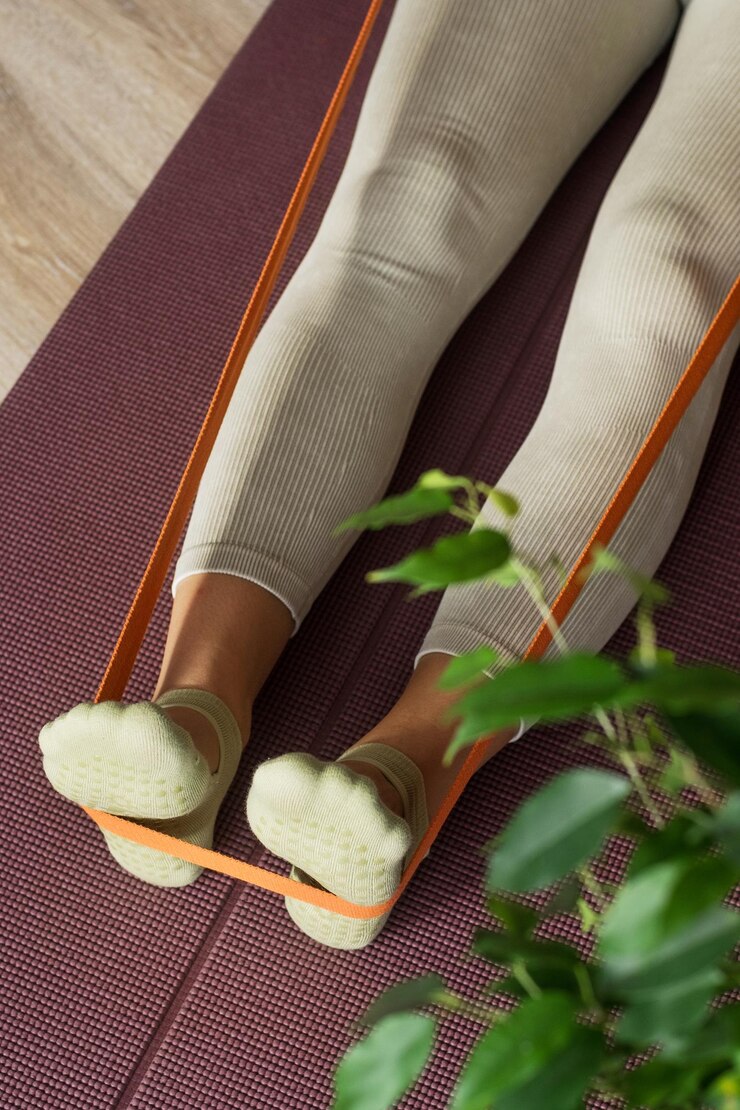A full-body workout that increases strength, burns calories and improves your general health can be accomplished from the comfort of your living room with the correct at-home fitness tips. With the least amount of equipment and the most effectiveness, this will show you how to work out your entire body at home. These can help you remain on course and accomplish your objectives, regardless of your level of fitness experience.

Why Home Workouts Work
Home workouts are convenient, cost-effective, and adaptable to your schedule. You don’t need fancy machines or weights to get a full-body workout. Bodyweight exercises, household items, and a little creativity can go a long way. Working out at home eliminates excuses like bad weather, long commutes, or crowded gyms.
High-Intensity Interval Training (HIIT) is another great way to maximize calorie burn in a short time. For a fun and low-impact option, try using a trampolines at home to improve cardiovascular health while strengthening your core and lower body. Setting up a dedicated workout space and following online workout videos can help maintain motivation and consistency, ensuring a well-rounded fitness plan that delivers results.
The Best Home Fitness Hacks for a Full-Body Workout
1. Master Bodyweight Exercises
Bodyweight exercises are the foundation of any effective home workout. They require no equipment, engage multiple muscle groups, and can be modified for all fitness levels. Here are some of the best bodyweight exercises for a full-body workout:
- Push-Ups: Targets your chest, shoulders, triceps, and core. Beginners can modify it by doing knee push-ups.
- Squats: Works your quads, hamstrings, glutes, and core. Add a jump for extra intensity.
- Planks: Strengthens your core, shoulders, and back. Hold for 30 seconds to a minute.
- Lunges: Focuses on your legs and glutes. Try walking lunges for a dynamic challenge.
- Burpees: A full-body exercise that combines squats, push-ups, and jumps for a cardio boost.
Incorporate these exercises into a circuit for a quick, effective workout. For example, do 10 push-ups, 15 squats, 20 lunges, and a 30-second plank. Repeat the circuit 3 to 4 times.
2. Use Household Items as Weights
You don’t need dumbbells to add resistance to your workout. Look around your house for items that can double as weights:
- Water Bottles: Fill two large water bottles and use them for bicep curls, shoulder presses, or lateral raises.
- Backpack: Load a backpack with books or cans and wear it during squats or lunges for added resistance.
- Towels: Use a towel for resistance exercises like towel rows or tricep extensions.
- Chairs: A sturdy chair can be used for step-ups, tricep dips, or incline push-ups.
3. Create a Dedicated Workout Space
A dedicated workout space can enhance motivation and consistency. It doesn’t need to be large, just a corner of your living room or bedroom will do. Clear the space of clutter, lay down a yoga mat, and keep your workout essentials nearby (e.g., water bottle, towel, resistance bands). This small step can make a big difference in your routine.
4. Follow Online Workout Videos
There are a ton of free workout options available online. There are innumerable full-body training videos available on websites like YouTube for people of various fitness levels. There is something for everyone, regardless of your preference for strength training, HIIT, or yoga.
Among the well-known channels are:
- Fitness Blender: Provides a range of free exercises for all skill levels.
- Adriene’s yoga: Ideal for people who want to become more flexible and aware.
- Professional trainers: lead exciting, high-intensity exercises at POPSUGAR Fitness.
Watching a video while you follow along might help you stay motivated and provide you with structure.
5. Incorporate High-Intensity Interval Training (HIIT)
HIIT is one of the most effective ways to burn calories and build strength in a short amount of time. It involves alternating between intense bursts of exercise and short rest periods. A typical HIIT workout might include:
- 30 seconds of jumping jacks
- 30 seconds of mountain climbers
- 30 seconds of squat jumps
- 30 seconds of rest
Repeat the circuit 4-5 times for a 20-minute full-body workout. HIIT is perfect for busy schedules because it delivers maximum results in minimal time.
6. Add Resistance Bands to Your Routine
Resistance bands are affordable, portable, and versatile. They can target every major muscle group, making them a great addition to your home gym. Here are a few exercises to try:
- Band Rows: Anchor the band to a door and pull it toward you to work your back and arms.
- Glute Bridges: Place the band above your knees and lift your hips to target your glutes and hamstrings.
- Lateral Walks: Step side-to-side with the band around your thighs to engage your outer thighs and glutes.
Resistance bands come in different levels, so you can gradually increase the challenge as you get stronger.
7. Make the Most of Your Stairs
If you have stairs at home, use them to your advantage. Stair workouts are a great way to build lower-body strength and cardiovascular endurance. Try these exercises:
- Step-Ups: Step onto the bottom stair with one foot, then bring the other foot up. Step back down and repeat.
- Stair Sprints: Run up and down the stairs for 30 seconds to get your heart pumping.
- Calf Raises: Stand on the edge of a step and raise your heels to work your calves.
Stair workouts are simple yet effective and add variety to your routine.
8. Stay Consistent with a Schedule
Consistency is key to seeing results. Set a regular workout schedule and stick to it. Whether 20 minutes in the morning or 30 minutes in the evening, find a time that works for you and make it a habit. Use a calendar or app to track your progress and stay accountable.
9. Mix It Up
Doing the same workout every day can lead to boredom and plateaus. Keep things interesting by mixing up your routine. Alternate between strength training, cardio, and flexibility exercises. Try new workouts, challenge yourself with different exercises, and set new goals to stay motivated.
10. Focus on Nutrition and Recovery
A full-body workout is only part of the equation. Proper nutrition and recovery are essential for achieving your fitness goals. To fuel your workouts, eat a balanced diet rich in protein, healthy fats, and complex carbs. Stay hydrated, sleep enough, and incorporate stretching or yoga to improve flexibility and prevent injury.
Simple Full-Body Home Workout Plan
Here’s a simple, no-equipment workout you can do at home:
- Warm-Up (5 minutes):
- Jumping jacks
- Arm circles
- High knees
- Workout (20 minutes):
- Push-Ups: 10 reps
- Squats: 15 reps
- Plank: 30 seconds
- Lunges: 10 reps per leg
- Burpees: 10 reps
- Repeat the circuit 3-4 times
- Cool-Down (5 minutes):
- Stretching (hamstrings, quads, shoulders, etc.)
- Deep breathing
Conclusion
Achieving a full-body workout at home is easier than you think. With bodyweight exercises, household items, and creativity, you can build strength, burn fat, and improve your fitness without stepping into a gym. The key is to stay consistent, challenge yourself, and have fun with your workouts. Remember, fitness is a journey, not a destination. Start small, stay committed, and watch your progress unfold.
FAQs:
- What is HIIT, and why is it effective for home workouts?
HIIT (High-Intensity Interval Training) involves short bursts of intense exercise followed by brief rest periods. It’s effective because it burns calories, builds strength, and improves cardiovascular fitness in a short amount of time perfect for busy schedules.
- Are resistance bands worth it for home workouts?
Yes, resistance bands are affordable, portable, and versatile. They can be used to target all major muscle groups and are perfect for adding resistance to bodyweight exercises.
- How long should a home full-body workout be?
A home full-body workout can range from 20 to 45 minutes, depending on your fitness level and goals. Shorter, high-intensity workouts can be just as effective as longer sessions.
- Can I build muscle with home workouts?
Yes, you can build muscle with home workouts by progressively increasing the intensity of your exercises. Use resistance bands, household items, or advanced bodyweight variations to challenge your muscles.
- What should I eat before and after a home workout?
Before a workout, eat a light snack rich in carbs and protein, such as a banana with peanut butter or yogurt with fruit. After a workout, focus on protein and healthy carbs to aid recovery, like a smoothie with protein powder or a chicken and veggie stir-fry.











